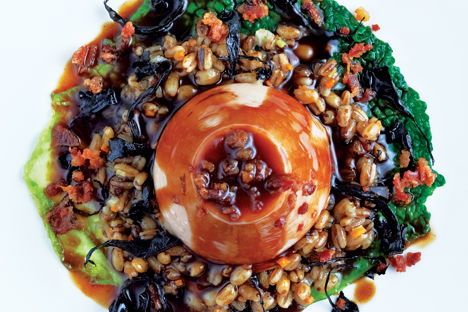Savoy cabbage is a classic vegetable - its attractive deep green colouring and crinkly leaves have ensured its popularity has never waned. What makes it even better is that when cooked it doesn’t emit the usual odour associated with overcooked cabbage.
What to look for when buying Savoy cabbage
Savoy cabbages are at their peak from October through to February.
Savoy cabbages should have deep green, crisp outer leaves, becoming lighter towards the core. The leaves should be tightly packed together, and the overall cabbage should feel heavy for their size.
How to cook Savoy cabbage
Savoy cabbage is a very versatile brassica as it can be prepared and cooked in a multitude of ways. It suits simple cooking methods well – it is wonderful when blanched and finished off in a hot pan with a knob of butter and some pancetta and garlic, perhaps.
The leaves of Savoy cabbage are both attractive and fairly durable; they can be eaten raw in salads or used to wrap meat balls or Vegetarian haggis – a very British alternative to stuffed vine leaves. Simply trim down any thick, tough veins and then blanch the leaves for a couple of minutes if using to wrap.
What Savoy cabbage goes with
When cooked, the sweet, mildly earthy flavour pairs nicely with pheasant, guinea fowl or grouse. That said, it goes with practically any bold-flavoured meat dish – think Sunday roasts, hearty pies or comfort dishes such as Dominic Chapman’s Toulouse sausages and lentils.
Get in touch
Please sign in or register to send a comment to Great British Chefs.



